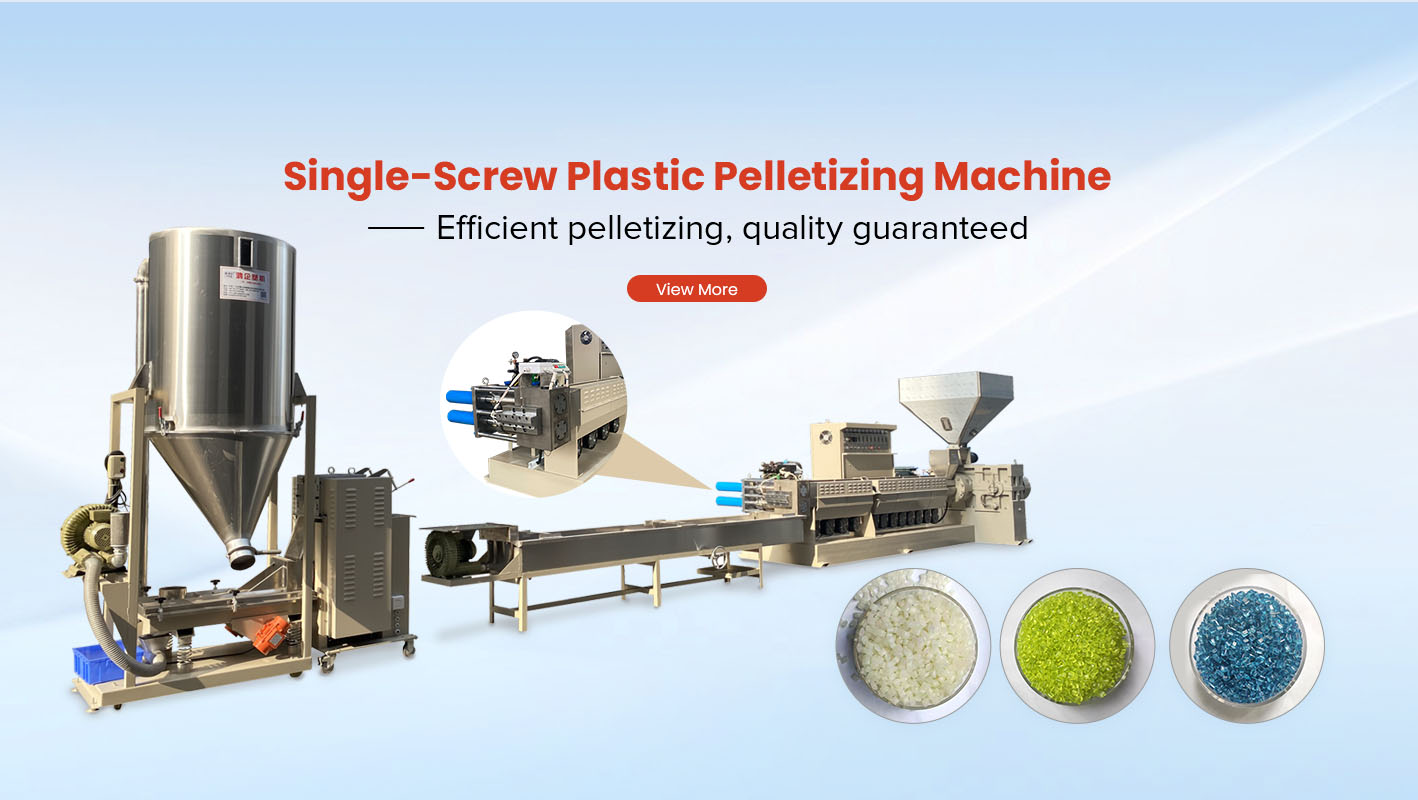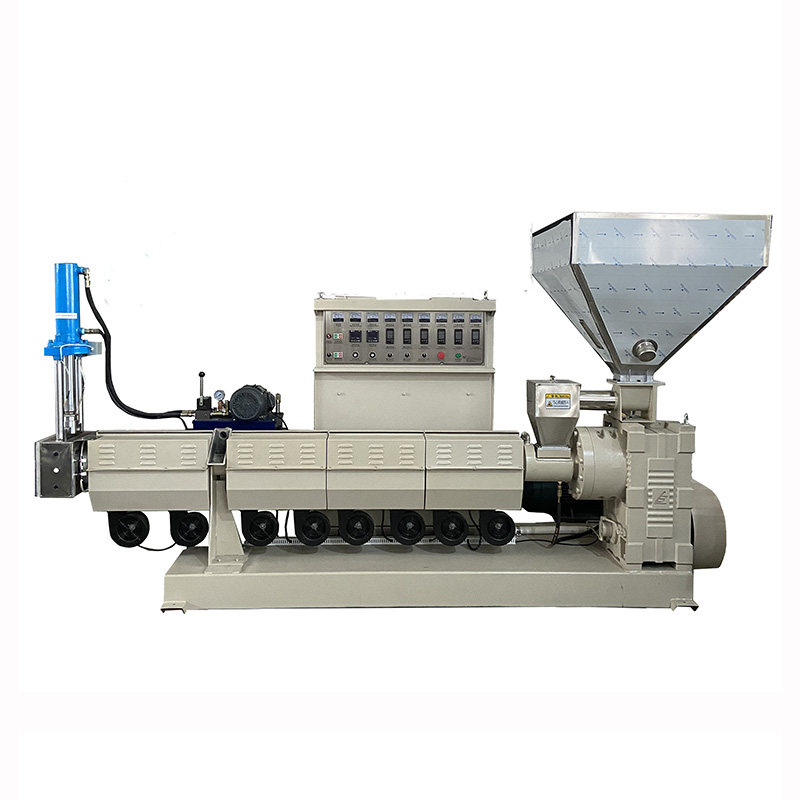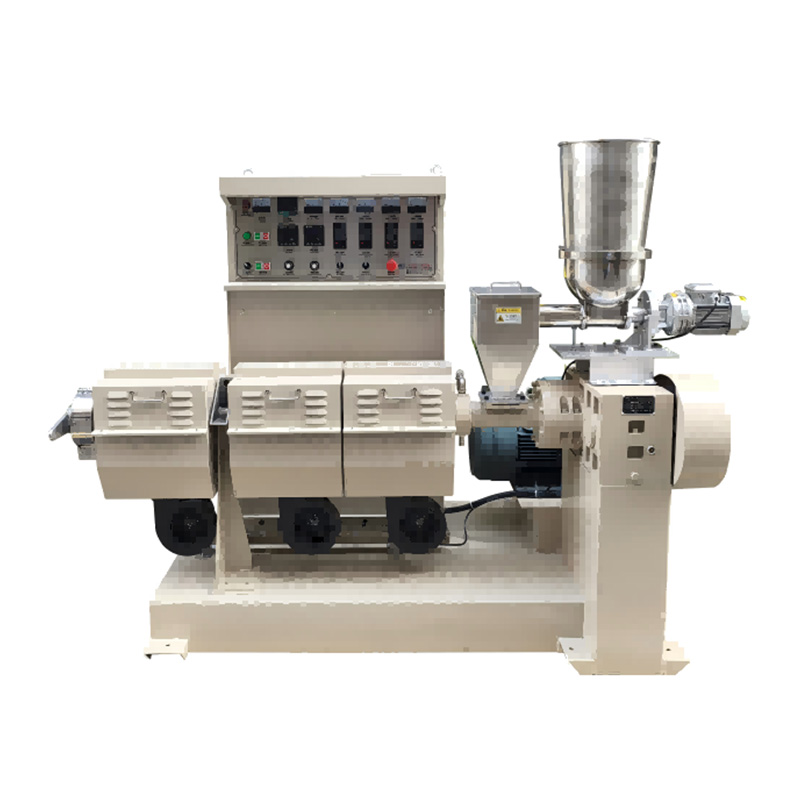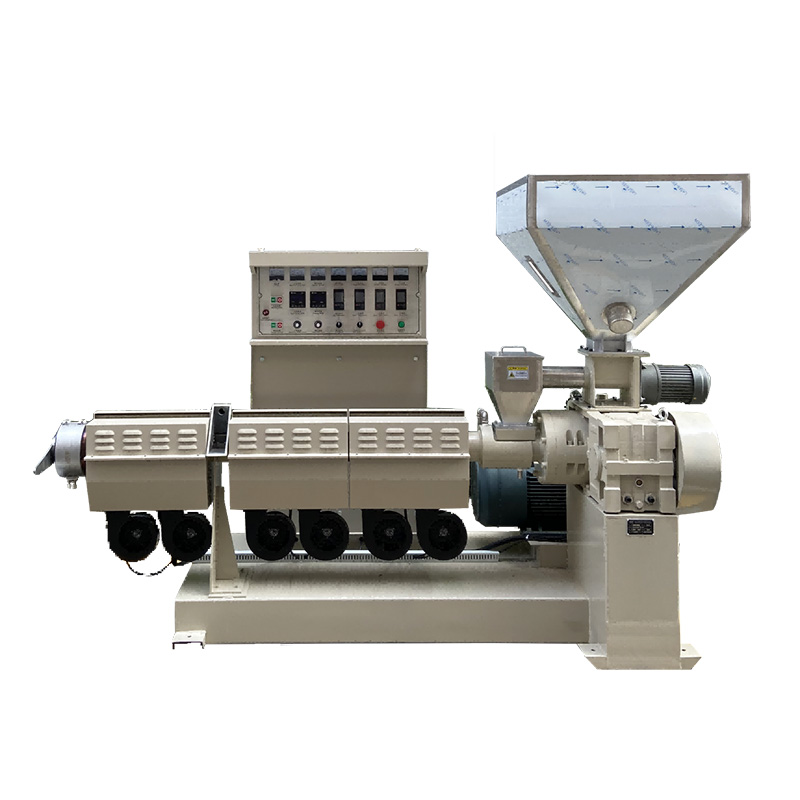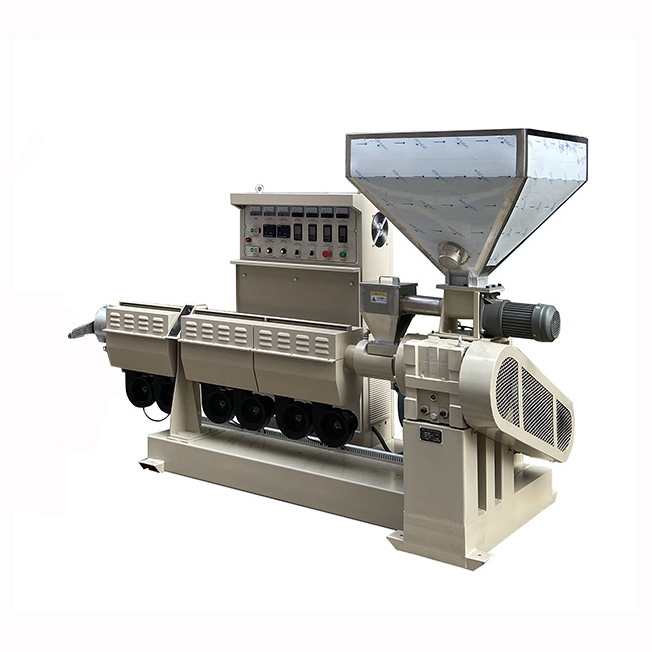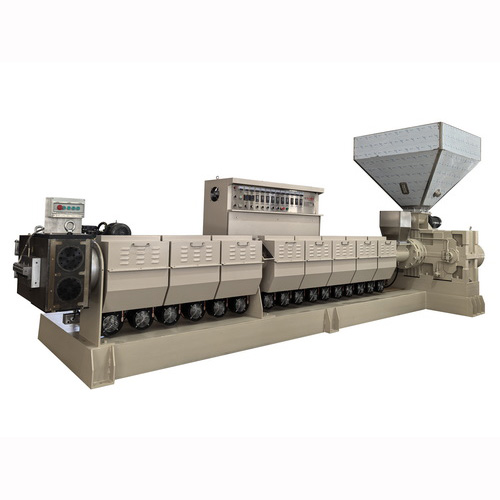Plastic Recycling Equipment
- Product Information
plastic recycling Equipment is a kind of mechanical equipment specially used for recycling and reprocessing plastic materials. It can transform discarded plastic products into reusable plastic particles or materials, thereby reducing the impact of plastic waste on the environment and providing a sustainable source of raw materials for the plastic processing industry.
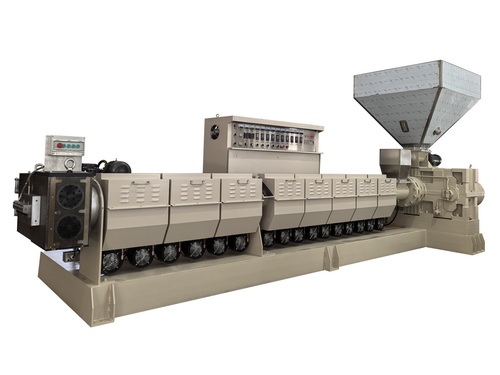
Plastic Recycling Equipment Infomation:
| Model: | HQ-150 |
| Warranty: | 1 Year |
| Port: | Nansha, China |
| Screw: | Single Screw |
| Terms of Payment: | T/T |
| Average Lead Time: | 1-2 months |
| Screen Changer: | Hydraulic pressure Screen Changer |
| International Commercial Terms (Incoterms): | FOB, CFR, CIF, EXW |
| Factory Nature: | China Manufacturers Suppliers Factory |
Plastic Recycling Equipment Production Line Configure:
| Product | Model | Power(KW) | Details |
| Single Screw Extruder HQ-150 | Motor: 200 | Electric cabinet | |
| Screw : Φ150*P150/150;L/D:30 | |||
| Barrel and screw materials: SACM-1 | |||
| Temperature Control: 9 dot control | |||
| Gear oil cooling and filtration system: 1 group | |||
| Barrel coling system: fan 370w*16pcs | |||
| Speed: Inverter (V&T) | |||
| Auto Feeder: 2.2KW; Screw 40/1 ( Inverter control ) | |||
| Screen changer: Dual Bolts Continuous Screen Changer 10.5KW+5.5KW, 29 holes | |||
| Water Cooling Tank with Suction motor | HQ-600 | 3.8 | 304# stainless steel cooling water tank, size 6000×500×400mm, with 3.8KW water suction motor |
| Pellets Cutting Machine | HQ-20 | 15 | SKD-11/tungsten steel rotary blade, 32 blades, inverter control |
| Vibrating Machine with Hopper | HQ-2500 | 5.5 | Screen Material: Stainless steel 304#, 3 layer |
| Screen Size: Up: Ø6mm, Down: Ø1.5mm | |||
| Vibration motor: 250W*2PCS | |||
| Production line length | 17m | ||
Plastic Recycling Equipment Parameters:
Model | HQ-90 | HQ-120 | H-150 |
Capacity | 200-300KG/HR | 4000-600KG/HR | 600-1000KG/HR |
Motor (Inverter Control) | 55KW | 110KW | 185KW |
Dimension
| 3850*1800*2100mm | 5600*2300*2500mm | 6500*2800*2500mm |
Weight | 2800KG | 5100KG | 6200KG |
Screw | Material:SACM-1 Φ90*P90/85; L/D:33 | Material:SACM-1 Φ120*P120/120; L/D:33 | Material:SACM-1 Φ150*P150/150; L/D:30 |
Temp.Control | 5 Section control | 8 Section control | 9 Point Controller |
Gear oil cooling filter system | 1 Group | 1 Group | 1 Group |
Barrel cooling fan | 180W*8PCS | 370W*12PCS | 370W*16PCS |
Barrel Heating | 40KW | 65KW | 90KW |
Screen Changer (Die head) | Hydraulic Pressure Screen Changer Heating: 4.3KW Screen: Φ200mm | Hydraulic Pressure Screen Changer Heating: 15KW Screen: Φ260mm | Hydraulic Pressure Screen Changer Heating: 5.5KW Screen: Φ330mm |
Auto Feeder ( Inverter Control ) | Materials: Stainless steel, Screw L/D: 60 Motor:750W | Materials: Stainless steel, Screw L/D:40 Motor:1500W | Materials: Stainless steel, Screw L/D: 40 Motor:2.2KW |
Plastic Recycling Equipment Features:
Single Screw Extruder: Single screw extruder is a common extrusion equipment suitable for processing many types of plastics. It melts and extrude plastics through a rotating screw, which can ensure uniform mixing and plasticization of plastics and improve product quality.
Hydraulic Pressure Screen Changer: Hydraulic pressure screen changer is used to quickly change screens, improve equipment flexibility and production efficiency. It can quickly change screens without stopping the machine, reduce downtime and improve production continuity.
Stainless Steel Construction: The equipment is usually made of stainless steel, which is corrosion-resistant and durable, extending the service life of the equipment. Stainless steel can resist the corrosion of chemicals generated during plastic processing, ensuring long-term stable operation of the equipment.
High-Efficiency Shredder: High-efficiency shredder can break large plastic products into small pieces to create conditions for subsequent processing. It is equipped with sharp blades and a powerful power system, which can quickly and effectively break various plastic materials and improve processing efficiency.
Energy-Efficient Motors: The equipment is equipped with energy-efficient motors to reduce energy consumption and operating costs. Energy-efficient motors can reduce energy consumption, improve energy efficiency, and reduce production costs while ensuring the normal operation of the equipment.
Automated Sorting Systems: Automated sorting systems can quickly identify and classify different types of plastics and improve processing efficiency. It uses advanced sensors and algorithms to accurately separate different types of plastics to ensure smooth subsequent processing.
Scalable Capacity: The equipment can be expanded according to production needs and adapt to recycling operations of different sizes. Users can increase the processing capacity of the equipment according to actual needs to meet growing business needs.
Heat Recovery Systems: Heat recovery systems can capture and reuse the heat generated during the extrusion process to further improve energy efficiency. It recovers the waste heat generated during the extrusion process and uses it to preheat raw materials or other production links to reduce energy waste.
Where can us use the Plastic Recycling Equipment?
Plastic Recycling: Plastic Recycling Equipment can be used to process waste plastics, produce recycled plastic particles, realize the recycling of plastic resources, and reduce dependence on virgin plastics.
Packaging Industry: Recycled plastics are used to produce new packaging materials, such as plastic bags, bottles, packaging boxes, etc., to reduce production costs and improve the sustainability of packaging materials.
Automotive Industry: Recycled plastics are used to manufacture automotive parts, such as dashboards, seats, interior panels, etc., to reduce vehicle weight, improve fuel efficiency, and reduce production costs.
Construction Industry: Recycled plastics are used to produce building materials, such as pipes, floors, insulation materials, etc., to improve the durability and environmental performance of building materials, and reduce dependence on traditional building materials.
Consumer Goods Production: Recycled plastics are used to produce daily consumer goods, such as furniture, toys, and home appliance shells, to meet consumer demand for environmentally friendly products and improve product market competitiveness.
Agricultural Field: Recycled plastics are used to make agricultural tools, such as greenhouse films, irrigation pipes, etc., to improve the efficiency and sustainability of agricultural production and reduce the pollution of farmland by plastic waste.
Electronic and electrical industry: Recycled plastics are used to manufacture housings and parts for electronic and electrical products, reducing production costs, improving the environmental performance of products, and complying with increasingly stringent environmental regulations.
Textile industry: Recycled plastics are used to produce textile fibers, clothing, carpets and other textiles, achieving high added value of plastic resources and promoting the sustainable development of the textile industry.

Plastic Recycling Equipment Maintenance:
Regular cleaning:
Cleaning inside the equipment: Regularly clean the plastic residue and impurities inside the equipment to prevent blockage and damage. Use special cleaning tools and solvents to ensure thorough cleaning.
Cleaning outside the equipment: Wipe the dust and dirt on the outside of the equipment to keep the appearance of the equipment clean and tidy, and prevent dust from entering the equipment and affecting its operation.
Lubrication and maintenance:
Regular lubrication: According to the requirements of the equipment manual, regularly lubricate the moving parts of the equipment, such as bearings, gears, screws, etc. Use suitable lubricants to ensure sufficient lubrication.
Check the lubrication effect: Regularly check the condition of the lubricant. If it is deteriorated or insufficient, replace or replenish it in time to ensure smooth operation of the equipment.
Check the worn parts:
Blade inspection: Regularly check the wear of the crusher blade. If the blade is found to be severely worn, replace it in time to ensure the crushing effect.
Screw inspection: Check the wear and deformation of the extruder screw. If there is a problem, repair or replace it in time to ensure uniform extrusion of the plastic.
Screw inspection: Regularly check the blockage and wear of the screen, clean or replace the screen in time to ensure the screening effect.
Electrical system inspection:
Wire inspection: Regularly check the wires and cables of the electrical system. If they are damaged or aged, replace them in time to prevent leakage and short circuit.
Control system inspection: Check whether the sensors, relays and other components of the control system are working properly to ensure that the automatic control of the equipment is accurate.
Temperature monitoring:
Set the temperature range: According to the operating instructions of the equipment, set the appropriate temperature range to avoid damage to the equipment due to excessively high or low temperatures.
Monitor temperature changes: During the operation of the equipment, pay close attention to temperature changes. If there are any abnormalities, adjust or stop the machine for inspection in time to prevent the equipment from overheating.
Pressure regulation:
Hydraulic system pressure regulation: According to the requirements of the equipment, regularly check and adjust the pressure of the hydraulic system to ensure stable pressure and avoid affecting the performance of the equipment due to excessively high or low pressure.
Pneumatic system inspection: For equipment using pneumatic systems, check whether the air pressure is normal. If there is a leak, repair it in time to ensure the normal operation of the equipment.
Filtration system maintenance:
Clean the filter: Regularly clean the filter and screen to remove impurities and blockages to ensure smooth material flow and improve production efficiency.
Replace filter elements: Replace filter elements in time according to the service life and blockage of filter elements to ensure the filtering effect.
Professional training:
Operator training: Provide professional training for operators to familiarize them with the structure, principle and operation method of the equipment, and master the correct operation skills and maintenance knowledge.
Regular refresher training: Regularly refresh operators to update their knowledge and skills and improve their ability to deal with equipment failures and emergencies.
Plastic Recycling Equipment FAQ?
What types of plastic recycling equipment are available?
Various types of equipment include shredders, crushers, granulators, washing lines, extrusion machines, and pelletizers. Each type specializes in a different stage of the recycling process, from breaking down plastic waste to refining it into reusable raw materials.
What are the benefits of using plastic recycling equipment?
Using plastic recycling equipment reduces environmental pollution, cuts down plastic waste in landfills, and creates sustainable materials for production. It also helps companies save on raw material costs by reusing recycled plastic instead of virgin plastic.
How does plastic recycling equipment contribute to sustainability?
By transforming plastic waste into reusable materials, plastic recycling equipment supports a circular economy, reducing the need for new raw materials and lowering carbon emissions. It plays a crucial role in addressing global plastic pollution.

